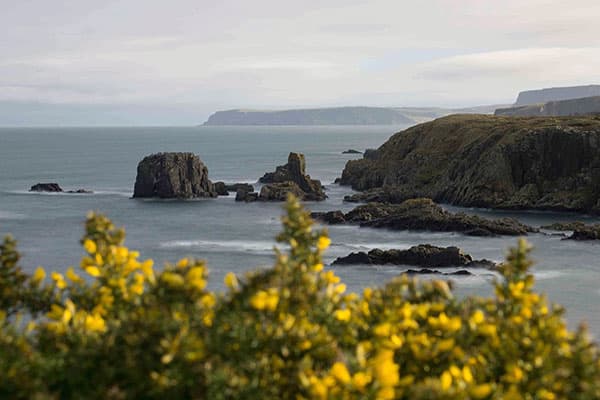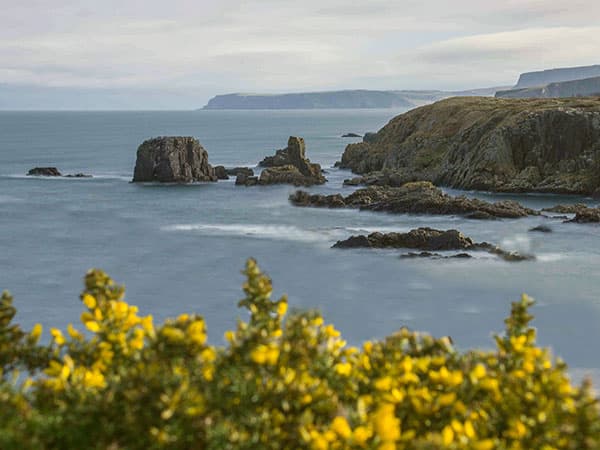Photo: Tarlair
Taken by: Mark Smith
Nikon D3100, 55-200mm, 13secs at f/16, ISO 100

Before: Tonal similarities mean a lack of distinct ‘zones’
Mark sent me a collection of generally well-executed images, most of which involve water and long exposures. I’ve picked this one as it demonstrates a common compositional problem. Although there are no rules, we usually need a foreground, a middle and a background in landscapes to show depth and distance. The foreground gives us that depth, as its close proximity to the eye emphasises just how far away the background is. As a result, we get a better sense of ‘being there’.
Mark has indeed included some great foreground in this shot, and although it is very out of focus, it provides that anchor we need. However, he has allowed the power of that foreground detail to be greatly reduced by composing the shot so that the yellows and greens of the gorse bush have become mixed up with the browns of the rocks in the middle zone. This lack of separation and the tonal similarity of the two areas allows our brain to take the easy route of treating them as part of the same zone. Thus, the sense of depth is somewhat undermined.
Had Mark hoisted his tripod head a little higher, he could have kept the flowers and the rocks further apart, which would have helped us appreciate the depth of the scene more.

After
I’ve created an alternative image (above) that shows what the view might have been with that extra height. I also lifted the shadows to allow more of the rocks’ features to come out. I helped the colour by overriding Mark’s auto white balance setting to provide some blue in the sea.








